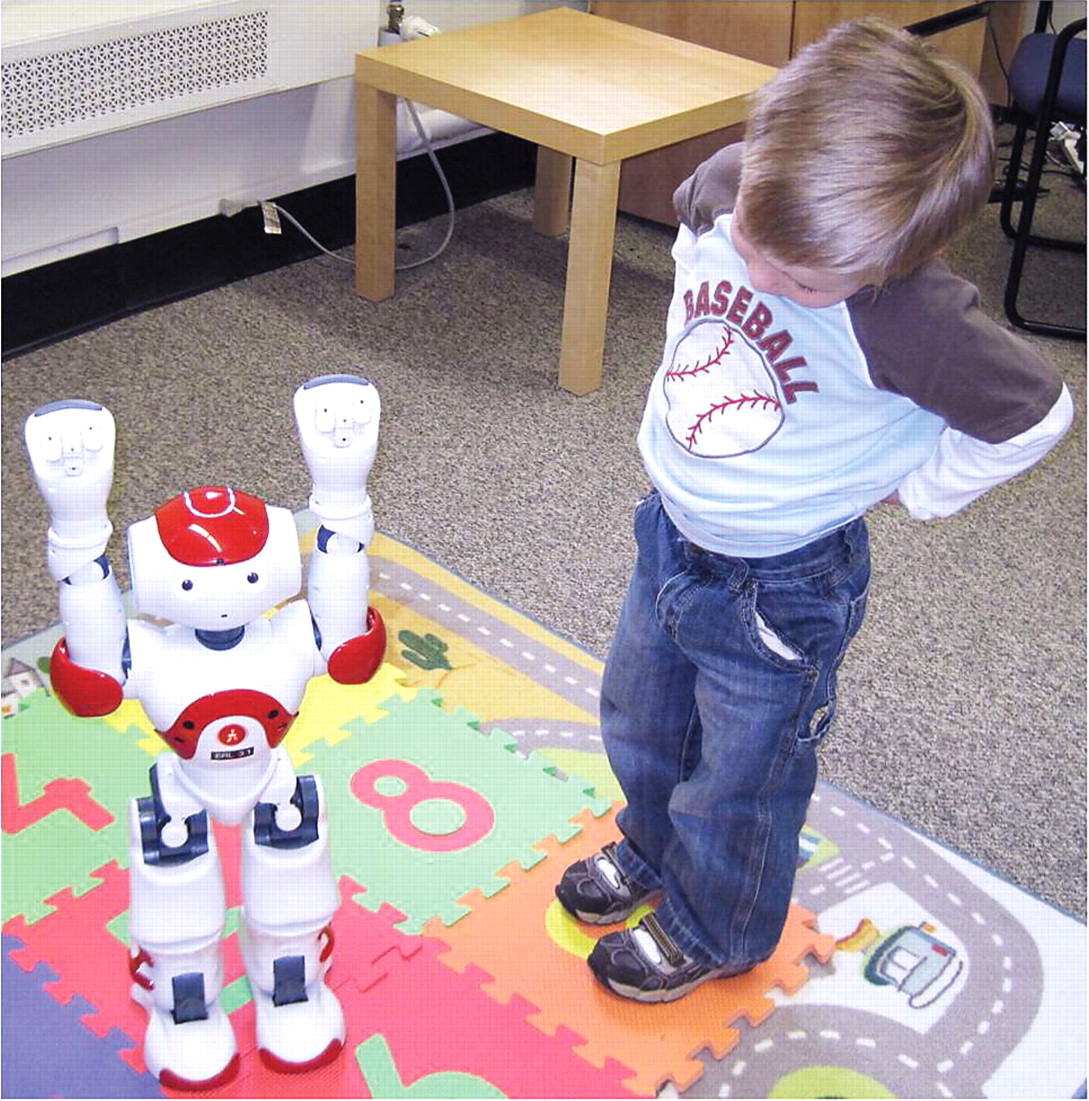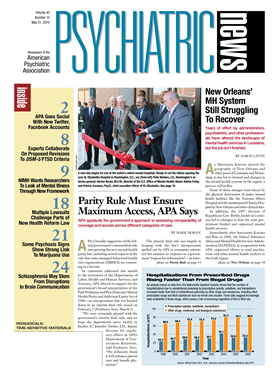During the past decade or so, autism has exerted an increasingly large impact on the American consciousness. The disorder is receiving a lot of media attention. Scientists are making progress toward understanding it. Government funds to research it are generous and growing.
And as for treatments, there have never been so many—actually hundreds of bewildering choices—arising from fields as disparate as psychiatry, psychology, regular education, special education, social work, speech pathology, and physical therapy.
The question, of course, is: Do any of them work?
Yes, some do, autism experts say, at least for some children, and they can favorably influence a number of autism-related factors, such as I.Q., language, and social skills, and reduce irritability, aggression, and self-injury.
Medications That Can Help
Before 2006, no medications had been approved by the Food and Drug Administration (FDA) to treat autism, David Posey, M.D., an associate professor of psychiatry at Indiana University and chief of the Christian Sarkine Autism Treatment Center in Indianapolis, said during an interview. Now, however, the second-generation antipsychotics risperidone and aripiprazole have been approved to treat irritability, aggression, and self-injury in children and adolescents with autism.
The first study of risperidone for treating autism irritability, aggression, and self-injury was funded by the National Institute of Mental Health and published in 2002, Posey said. After that, Janssen, the company that makes risperidone, conducted additional studies regarding these indications, which led to FDA approval of the drug to treat these symptoms. Moreover, Janssen's involvement “triggered interest among pharmaceutical companies in finding effective treatments for autism,” he noted. “This is a disorder that hadn't interested them before.”
Psychosocial Interventions Show Efficacy
The psychosocial interventions for autism that have the strongest scientific evidence are based on a science called applied behavioral analysis (ABA), Posey noted. Rebecca Landa, Ph.D., director of the Center for Autism and Related Disorders at the Kennedy Krieger Institute in Baltimore, and Brian Reichow, Ph.D., a postdoctoral associate at the Yale Child Study Center, concurred with Posey.
“ABA is a science based on behaviorism,” Reichow said—that is, on traditional behavioral conditioning. Or as Posey put it, “You analyze behaviors in a child that are either maladaptive or desirable, determine the causes of those behaviors, then come up with ways either to change the maladaptive behaviors or to reinforce the desirable ones.”
ABA treatments for children with autism can be very structured, Landa explained. “This would be where the therapist gives the child repeated opportunities to do the same thing. For example, you might put down a series of pictures of objects and say, ‘Touch cup,’ and then pick the pictures up and put more pictures down and say, ‘Touch shoe.’ The child is given specific instructions and is given rewards. If the child says ‘ball,’ for example, he or she might get an M & M candy.”
ABA treatments for children with autism can also be naturalistic, Landa said. “For example, if you are teaching a child to say ‘ball,’ and the child says ‘ball,’ you roll a ball to the child. While you are playing with the ball, you encourage the child to say ‘ball.’”
There is robust evidence that structured ABA treatments can raise I.Q. and improve language in children with autism and that more naturalistic ABA treatments can raise I.Q., improve language, and improve social outcomes such as imitation and joint attention in children with autism, Landa said. “Joint attention is the ability to pay attention to other people's attention-getting cues,” she explained. “It is critical for socializing and for learning language.”
Developmental Sciences Also Assist
Psychosocial treatments based on the developmental sciences can also benefit children with autism, Landa reported.
The main thrust of such treatments is to follow the child's lead, imitate what the child does, label the child's actions, and basically get the child to stay socially engaged for longer and longer periods of time. Such treatments can improve the I.Q., language, and social skills of children with autism, randomized controlled trials and other research have shown.
While ABA treatments and developmental-science treatments are used mostly with children of kindergarten age or younger, they can also be applied to older children, Landa pointed out. Still other interventions have been found to benefit older children in particular, she noted. For instance, some social-skills treatments have been found to increase social initiation and appropriate social behavior, and some peer-mediated treatments have been found to increase popularity among peers.
So, “it is clear that there are a variety of approaches that—although not resulting in ‘cures’ for autism—can result in improvements in many areas, including communication, social functioning, and behavioral difficulties,” Patricia Howlin, Ph.D., an autism expert with the Institute of Psychiatry at King's College, London, wrote in the March Advances in Psychiatric Treatment.
Thanks to these approaches, “more and more kids [on the autism spectrum] are doing better, becoming independent, even going to college, which is fantastic,” said Fred Volkmar, M.D., director of the Yale Child Study Center, in an interview.
More Treatments Coming
So what might the next decade hold for autism treatment?
Landa and her colleagues are trying to see whether some of the ABA and developmental-science strategies that work for children aged 3 to 5 with autism might also benefit even younger children with the disorder.
Another finding with treatment potential is that the glutamate memantine can counter some of the core social and communication impairments in autism, preliminary reports have suggested. As a result, in April, Forest Laboratories, maker of memantine, launched an open-label study, to be followed by a randomized, double-blind, placebo-controlled study, to investigate the safety and efficacy of memantine in children with autism.
Another glutamate antagonist, riluzole, is being explored as a treatment for the repetitive behaviors of autism, since it has shown promise in the treatment of obsessive-compulsive disorder.
And Posey and colleagues have just launched a study to see whether the glutamate partial agonist D-cycloserine can enhance social skills in subjects with autism.
Posey is optimistic about the outcome of these glutamatergic treatments since “both genetic and neurochemical studies have revealed glutamatergic abnormalities in autism; drugs that act on this system are not commonly used in psychiatry and may possess some unknown benefits in autism.” Indeed, “a systematic examination of drugs affecting the glutamate neurotransmitter is needed,” he said.
Also on the cutting edge, two scientists at the University of Connecticut—Anjana Bhat, Ph.D., an assistant professor of kinesiology, and Timothy Gifford, director of the Advanced Interactive Technology Center—have received a National Institute of Mental Health grant to see whether robots can improve the social and motor skills of children with autism.
The rationale, Bhat told Psychiatric News, is that normally developing children like interacting with robots, so she and Gifford thought that children with autism might like doing so as well. They took an off-the-shelf robot and wrote their own software to run it and to encourage children to imitate and interact with it. So far two children with autism have done so, and “they love it!” Bhat reported. Moreover, “one of the children had a lot of behavioral problems but, over the weeks of using the robot, calmed down and started getting friendlier with us.”
Bhat and Gifford will now be exposing five children with autism to multiple child-robot interaction sessions to determine whether the interactions can favorably impact the youngsters' social and motor skills. Then they will conduct a randomized, controlled trial to test the same hypothesis. In that trial, 20 children with autism will receive the usual treatments for autism plus the robot-child intervention, while 20 other children with autism will receive the usual treatments only. “We want to get some numbers to see if this technique really works,” Gifford said.
“I'm hopeful that we'll chip away at this one piece at a time and find interventions that, if not a cure for autism, cause drastic improvements in it,” Landa declared.
Extensive information about treatments for autism is posted at <www.researchautism.net>, a Web site associated with the United Kingdom National Autistic Society. It can also be found in the 2009 book A Practical Guide to Autism: What Every Parent, Family Member, and Teacher Should Know by Volkmar and Lisa Wiesner. 

